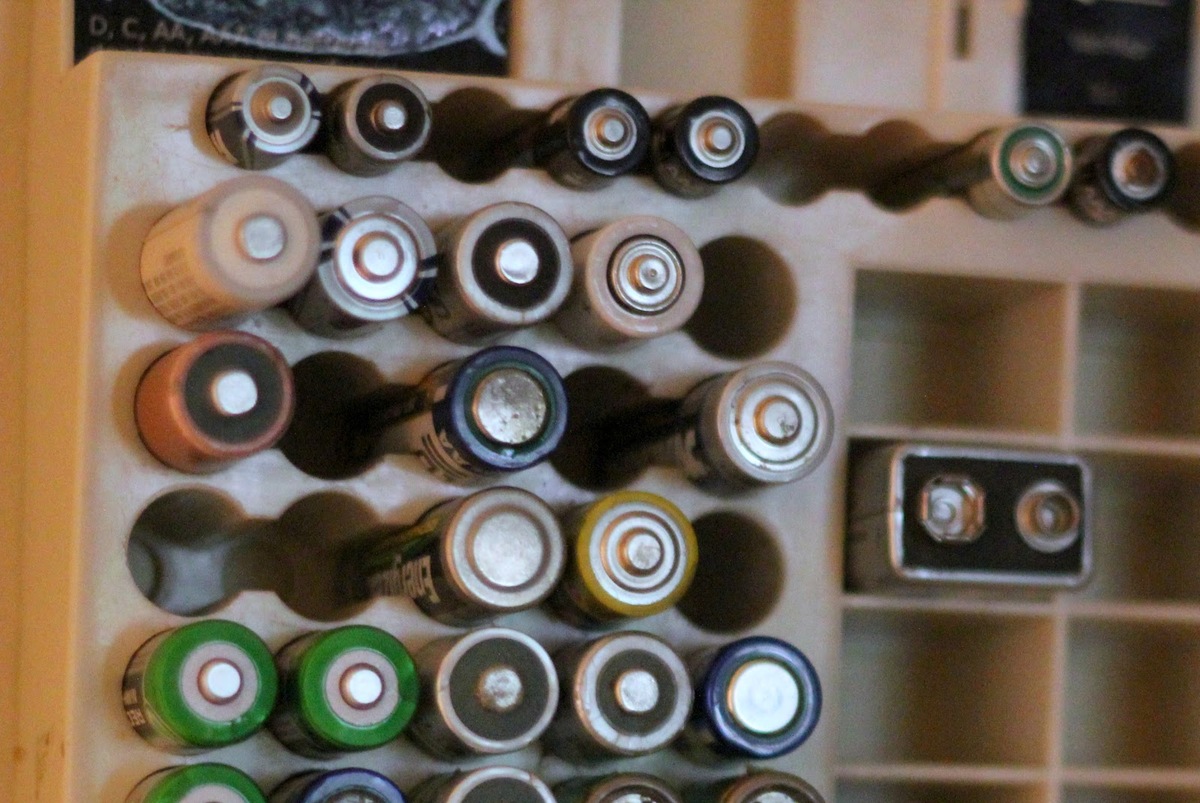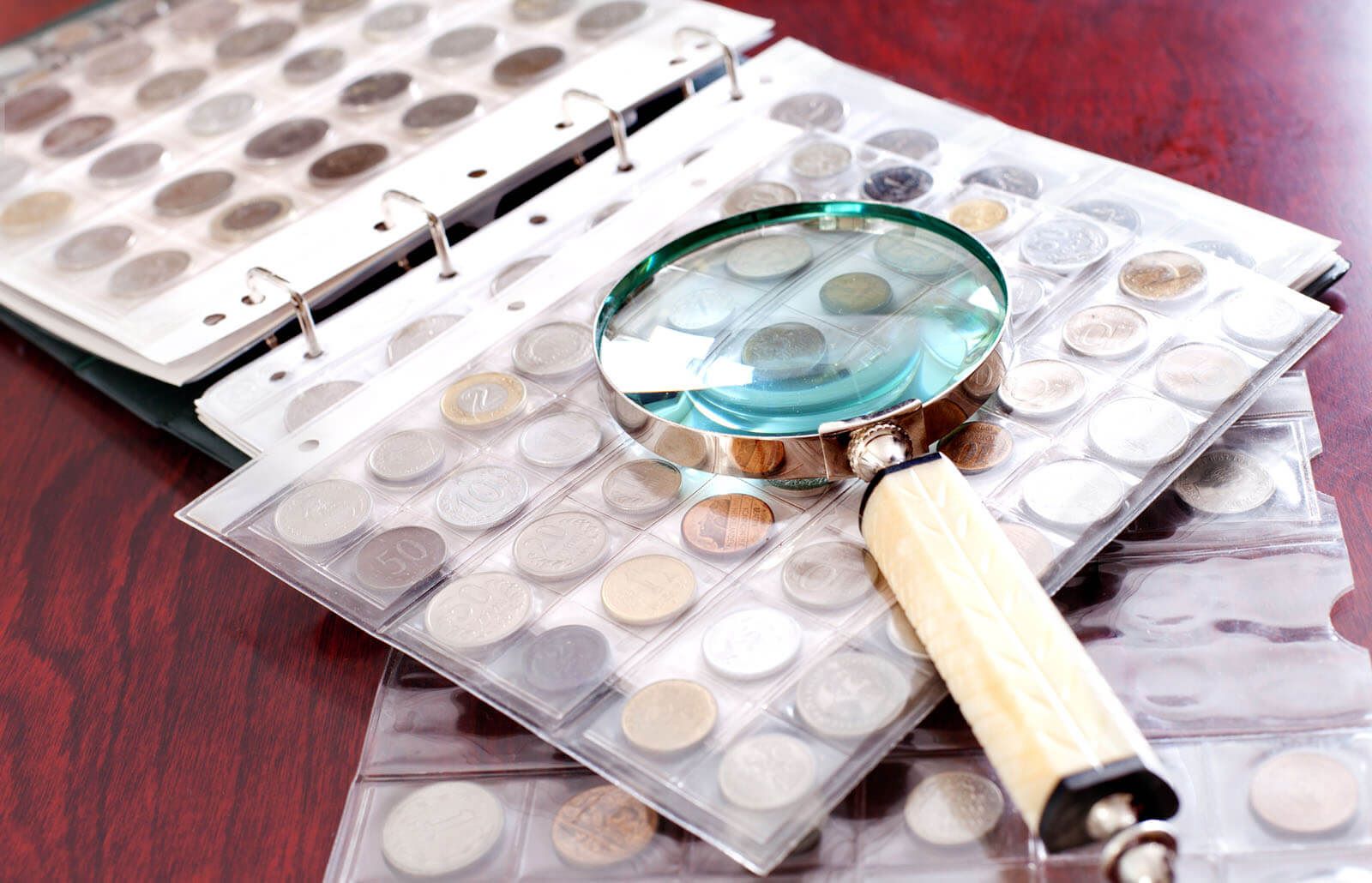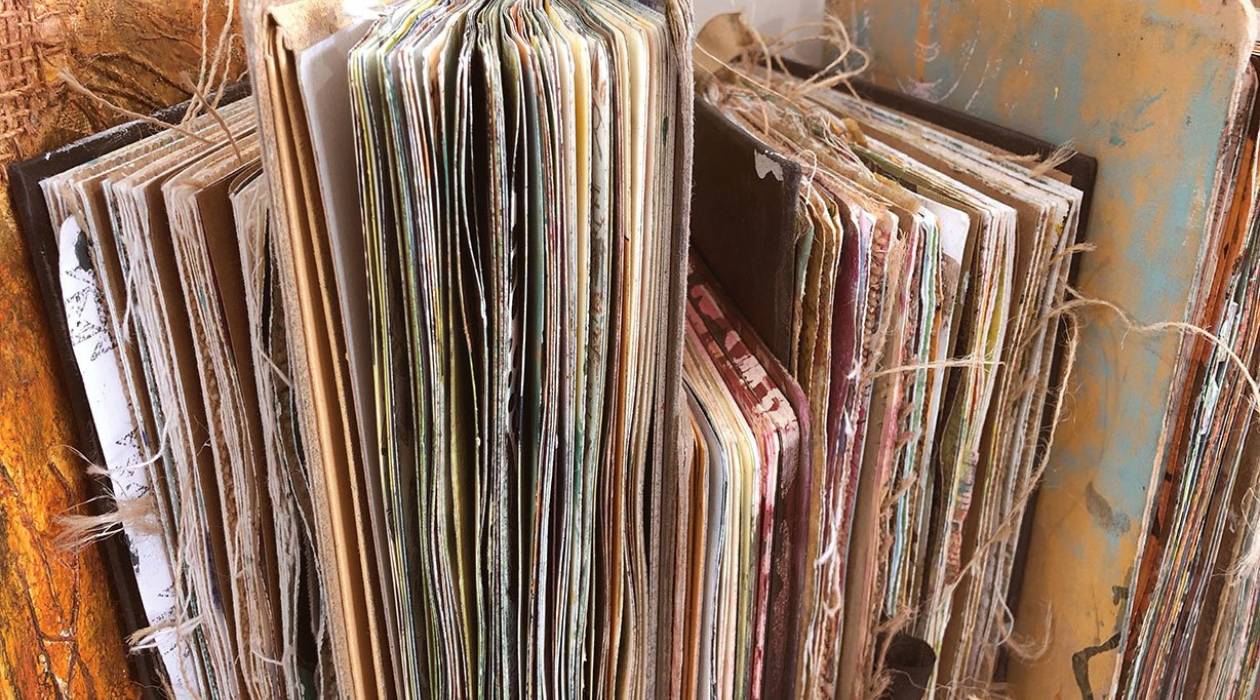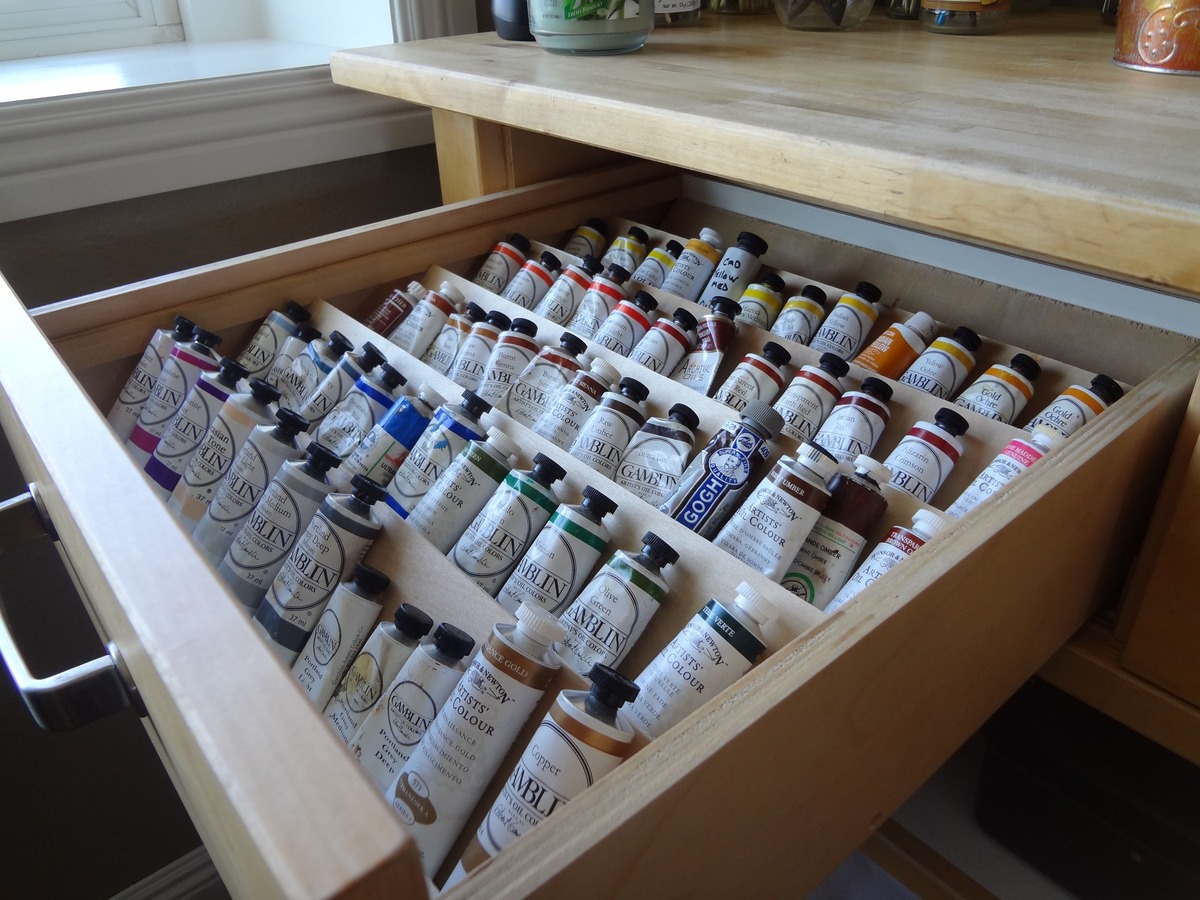

Articles
How To Store Old Magazines
Modified: May 6, 2024
Looking to store your old magazine articles? Find out the best methods and tips for preserving and organizing your collection of articles.
(Many of the links in this article redirect to a specific reviewed product. Your purchase of these products through affiliate links helps to generate commission for Storables.com, at no extra cost. Learn more)
Introduction
Old magazines can hold a wealth of information, nostalgia, and collectible value. Whether you have a collection of vintage fashion magazines, historic newspapers, or cherished comic book issues, properly storing these treasures is crucial for their preservation. In this article, we will explore various methods and techniques to store old magazines effectively.
Before delving into the details of magazine storage, it is important to understand the value of these publications. Old magazines provide a snapshot of the past, offering insights into the cultural, social, and historical aspects of a particular era. They often contain articles, photographs, and advertisements that are not just valuable to collectors, but also researchers, historians, and enthusiasts.
However, as time passes, magazines can deteriorate due to factors like moisture, dust, sunlight, and improper handling. Without proper storage, these valuable items can become damaged, discolored, or even lost. Therefore, it is essential to take proactive measures to preserve and protect your collection.
In this article, we will present a comprehensive guide on how to store old magazines, focusing on factors such as assessing the condition of the magazines, choosing the right storage location, gathering the necessary supplies, organizing the magazines, using storage boxes and binders, using plastic sleeves, maintaining the storage environment, and protecting magazines from damage.
By following the suggestions and techniques outlined in this article, you can ensure the longevity and preservation of your cherished magazine collection. So, let’s begin our journey into the world of magazine storage!
Key Takeaways:
- Preserve the Past: Safeguard your old magazines by assessing their condition, choosing the right storage location, and gathering the necessary supplies. Maintain the storage environment to ensure their longevity and historical significance.
- Handle with Care: Organize and protect your old magazines using acid-free storage boxes, binders, plastic sleeves, and labels. Implement measures to prevent damage from moisture, sunlight, and pests, ensuring the preservation of your cherished collection.
Read more: How To Store Magazines
Assessing the Condition of the Old Magazines
Before you embark on the task of storing your old magazines, it is important to assess their condition. This step will help you determine the level of preservation and the specific storage requirements for each magazine in your collection.
Start by inspecting the magazines for any signs of damage or deterioration. Look out for yellowing or discoloration of pages, tears, creases, stains, or crumbling edges. These are common issues that can worsen over time if not addressed properly. Take note of any magazines that require extra care or restoration.
Additionally, consider the materials used in the magazines. Some older publications may be printed on acidic paper, which can accelerate deterioration. Look for any signs of acid burn, which appear as brownish spots or discoloration. If you come across any magazines with this issue, it is advisable to consult a professional conservator to seek guidance on preservation techniques.
Furthermore, pay attention to the presence of insects or mold. Inspect the magazines carefully, particularly in dark and damp areas where these harmful agents thrive. If you find any signs of infestation or mold growth, it is crucial to take immediate measures to mitigate the damage and prevent it from spreading to other items in your collection.
Once you have assessed the condition of each magazine, make a record of the specific issues you have identified. This will help inform your storage decisions and prioritize any necessary restoration or preservation efforts.
Remember, assessing the condition of your old magazines is a crucial step in ensuring their long-term preservation. It allows you to tailor your storage approach to the specific needs of each magazine, helping to maintain their value and integrity over time.
Choosing the Right Storage Location
Once you have assessed the condition of your old magazines, the next step is to choose an appropriate storage location. Finding the right environment for your collection is crucial in preserving its longevity and preventing damage from external factors.
Firstly, consider the temperature and humidity levels of the storage area. Ideally, magazines should be stored in a cool and dry location to prevent the growth of mold and minimize the risk of paper deterioration. A temperature range of 60-70°F (15-21°C) with a humidity level of around 40-50% is recommended. Avoid areas with extreme temperature fluctuations or high humidity, such as basements, attics, or garages.
It is also important to protect your magazines from direct sunlight. Prolonged exposure to UV rays can cause paper and ink to fade over time. Choose a storage spot away from windows or install UV-filtering curtains or blinds to block out harmful rays.
Next, consider the air quality of the storage area. Avoid storing magazines in spaces with poor ventilation or areas prone to dust accumulation. Dust particles can settle on the pages and contribute to discoloration and degradation. If the storage space lacks proper ventilation, make sure to periodically open windows or use fans to keep the air circulating.
In addition to air quality, it is important to consider the security of your storage location. Protect your collection from the risk of theft, fire, or water damage by storing it in a secure and well-protected area of your home or in a dedicated storage facility.
Lastly, consider the accessibility of the storage area. Ensure that you can easily retrieve and handle your magazines without causing unnecessary damage. Avoid stacking heavy items on top of magazine boxes or binders, as this can lead to crushing or bending of the magazines.
By carefully choosing the right storage location, you can create a conducive environment for the preservation of your old magazine collection. Remember to periodically monitor the conditions of the storage area and make any necessary adjustments to ensure the longevity of your cherished publications.
Gathering Supplies for Magazine Storage
In order to properly store your old magazines, it is important to gather the necessary supplies. Having the right tools and materials will help protect your magazines from damage and deterioration. Here are some essential supplies for magazine storage:
1. Acid-free archival boxes: These sturdy boxes provide protection against dust, light, and moisture. Look for boxes specifically designed for long-term storage of magazines. Ensure the boxes are acid-free to prevent any chemical reactions that may harm your magazines.
2. Acid-free archival folders or sleeves: These are ideal for individual magazine issues or special editions. Acid-free folders or sleeves help prevent acidity buildup and offer additional protection against tearing, creasing, and moisture damage.
3. Acid-free tissue paper: Use acid-free tissue paper to gently interleave each magazine page. This will prevent pages from sticking together and protect delicate illustrations or photographs from smudging or transferring ink.
4. Magazine binders: Magazine binders are a great option if you want to organize and display your favorite or most valuable magazines. Look for binders specifically designed for magazines with acid-free materials and sturdy spines to ensure proper support and preservation.
5. Plastic magazine sleeves: Clear, archival-quality plastic sleeves can be used to further protect individual magazine issues from dust, moisture, and handling. Ensure the sleeves are acid-free and fit the size of your magazines properly.
6. Plastic magazine covers: Consider using plastic magazine covers to add an extra layer of protection to your magazines. These covers help prevent damage from handling, spills, or accidents.
7. Gloves: When handling your old magazines, it is advisable to wear clean, cotton gloves to minimize the transfer of oils and dirt from your hands onto the pages.
8. Labels or markers: Use labels or markers to clearly identify each box or folder with the magazine titles, dates, or any other relevant information. This will make it easier to locate specific magazines in the future without the need to search through each box or binder.
By gathering these supplies, you will be well-equipped to properly store and protect your old magazine collection. Remember to choose acid-free and archival-quality materials to ensure the long-term preservation of your cherished publications.
Organizing the Magazines
Organizing your old magazines is not only practical but also helps preserve their integrity and makes them easier to access and enjoy. An organized collection ensures that magazines are stored in a systematic and logical manner. Here are some tips for effectively organizing your magazines:
1. Sort by category or theme: Begin by sorting your magazines into categories or themes. This could be based on the publication title, subject matter, or time period. For example, you could create categories like fashion, sports, history, or specific decades.
2. Arrange chronologically: Once you have categorized your magazines, arrange them chronologically within each category. This will make it easier to locate specific issues and track the progression of trends, events, or stories over time.
3. Use dividers or tabs: Insert dividers or tabs in your storage boxes or binders to separate each category or time period. This makes it visually appealing and helps you locate magazines more quickly.
4. Cataloging and documenting: Consider creating a catalog or inventory of your magazine collection. This can be in the form of a spreadsheet or a software program specifically designed for cataloging collections. Document important details such as magazine titles, dates, condition, and any notable features or articles. This catalog will serve as a handy reference and aid in tracking your collection.
5. Consider index cards or labels: To make magazines within each category easier to locate, you can create index cards or labels with magazine titles and arrange them alphabetically. This way, you can easily determine which box or binder contains specific magazines.
6. Group similar-sized magazines: If you have magazines of various sizes in your collection, consider grouping them together based on size. This will help prevent larger magazines from crushing or damaging smaller ones.
7. Avoid overstuffing containers: When placing magazines in storage boxes or binders, avoid overstuffing them. Overcrowding can lead to creasing, bending, or tearing of the pages. Leave some space to allow for proper ventilation and maneuverability.
By organizing your magazine collection in a systematic and structured manner, you will not only enhance its visual appeal but also ensure its preservation and ease of access. Take the time to categorize, arrange chronologically, and document your collection for a more enjoyable and efficient magazine storage experience.
Read more: How To Store Magazine Collection
Using Magazine Storage Boxes
Magazine storage boxes are a convenient and effective way to protect and organize your old magazines. These boxes are specifically designed to accommodate the size and shape of magazines, ensuring their proper storage and preservation. Here’s how you can make the most of magazine storage boxes:
1. Choose the right size: Select storage boxes that are appropriately sized for your magazines. It is important that the boxes are not too small, causing the magazines to bend or crumple, or too large, allowing them to shift and become damaged. Measure your magazines and choose boxes with dimensions that provide a snug fit.
2. Opt for acid-free boxes: Look for storage boxes made from acid-free materials. Acidic materials can cause deterioration and yellowing of paper over time. Acid-free boxes will help prevent this and maintain the integrity of your magazines.
3. Handle with care: When placing magazines in the storage boxes, handle them gently to avoid tearing or creasing. Insert acid-free tissue paper between magazines to prevent pages from sticking together and to provide added protection.
4. Label the boxes: To easily identify the contents of each box, label them with the magazine titles, dates, or any other relevant information. This will save you time when searching for specific magazines in the future.
5. Store in a cool, dry place: Position the storage boxes in a cool and dry location to protect the magazines from moisture and humidity. Avoid areas prone to temperature fluctuations or high humidity, such as basements or attics, as these conditions can accelerate deterioration.
6. Stack boxes properly: When stacking the storage boxes, ensure that the weight is evenly distributed to prevent crushing or damage to the magazines. Place heavier boxes at the bottom and lighter ones on top to maintain stability.
7. Regularly inspect and maintain: Periodically check the condition of the magazines in the storage boxes. This will allow you to identify any potential issues, such as pests or mold growth, and address them before they cause significant damage.
Using magazine storage boxes will help keep your old magazines organized, protected, and easily accessible. By following these tips, you can ensure the longevity and preservation of your magazine collection for years to come.
Store old magazines in acid-free boxes or plastic sleeves to prevent yellowing and damage. Keep them in a cool, dry place away from sunlight to preserve their quality.
Using Magazine Binders
Magazine binders are a popular choice for organizing and displaying old magazines. They offer a convenient and visually appealing way to store and protect your collection. Here’s how you can effectively use magazine binders for your old magazines:
1. Select the right binder size: Choose binders that can accommodate the size of your magazines. Opt for binders specifically designed for magazines, as they provide the appropriate width and support. Make sure the binders are sturdy and made from acid-free materials to prevent damage to your magazines.
2. Insert magazines carefully: When placing magazines in the binders, do so gently to avoid tearing or bending the pages. Start with the oldest magazine and work your way forward chronologically. If the magazine is fragile or has loose pages, consider placing it in an acid-free sleeve before inserting it into the binder to provide extra protection.
3. Use magazine spines or labels: Utilize binder spines or labels to identify the contents of each binder. Label them with the magazine titles, dates, or any other relevant information. This will make it easier to locate specific magazines without needing to flip through each one.
4. Group magazines by category: Organize your magazines within the binders by category or theme. Arrange them in a way that makes sense to you, whether it’s by subject matter, publication title, or time period. This will facilitate easy navigation and retrieval of magazines.
5. Avoid overfilling the binders: Be mindful not to overstuff the binders, as it can put pressure on the magazines and cause damage. Leave some space for proper ventilation and to prevent pages from being crushed or bent.
6. Display your favorites: Consider showcasing your favorite or most valuable magazines in transparent sheet protectors within the binders. This allows you to enjoy the covers and easily flip through the pages without directly handling the magazines.
7. Store binders properly: Keep the binders in a location away from direct sunlight, excessive heat, or moisture. Store them upright on a shelf or in a cabinet to prevent them from leaning or bending. Avoid stacking heavy objects on top of the binders to prevent damage.
Using magazine binders offers a practical and attractive way to organize and protect your old magazines. By following these tips, you can ensure that your collection is well-preserved, easily accessible, and a delight to browse through.
Storing Magazines in Plastic Sleeves
Using plastic sleeves is an excellent method for protecting individual magazine issues from dust, moisture, and handling damage. Plastic sleeves provide an additional layer of preservation and allow for easy browsing of your collection. Here’s how you can effectively store your magazines in plastic sleeves:
1. Choose acid-free and archival-quality sleeves: Select plastic sleeves that are specifically designed for archival purposes. Look for sleeves made from acid-free and PVC-free materials. Acid-free sleeves prevent chemical reactions that can deteriorate your magazines over time.
2. Size matters: Ensure that the plastic sleeves are the appropriate size for your magazines. Consider the height, width, and thickness of your magazines to find sleeves that provide a snug fit without bending or compressing the pages.
3. Insert magazines carefully: Gently slide each magazine into its respective plastic sleeve. Avoid using excessive force or bending the pages. If the magazine is delicate or has loose pages, consider using acid-free adhesive corners or archival tape to secure loose pages and preserve their integrity.
4. Group sleeves in magazine storage boxes or binders: Once the magazines are placed in plastic sleeves, you can store them in magazine storage boxes or binders. This not only provides an additional layer of protection but also helps with organization and easy access to your collection.
5. Label the sleeves: Use labels or write directly on the plastic sleeves to identify the magazine titles, dates, or any other relevant information. This will make it easier to locate specific issues without needing to remove each magazine from its sleeve.
6. Handle with care: When handling magazines stored in plastic sleeves, it is still important to treat them gently. Avoid bending or folding the sleeves and always use clean, dry hands or cotton gloves to prevent transferring oils or dirt onto the sleeves or magazines.
7. Store in a cool, dry location: Position the magazine storage boxes or binders in a cool and dry area to avoid moisture damage. Ensure that the storage location is away from direct sunlight and extreme temperature fluctuations, as these can degrade the plastic sleeves over time.
Storing magazines in plastic sleeves offers an excellent level of protection against common damage factors. By following these guidelines, you can effectively preserve and enjoy your magazine collection for years to come.
Maintaining the Storage Environment
Creating and maintaining the proper storage environment is essential for preserving the longevity and quality of your old magazine collection. By controlling the temperature, humidity, and other environmental factors, you can significantly minimize the risk of damage. Here are some tips to maintain the storage environment for your magazines:
1. Temperature control: Aim to keep the storage area at a constant temperature, ideally between 60-70°F (15-21°C). Fluctuating temperatures can cause stress on the magazines, leading to warping, yellowing, or other forms of deterioration. Avoid storing magazines in areas prone to extreme temperature variations, such as attics or basements.
2. Humidity control: Maintain a relative humidity level of around 40-50% to prevent excessive dryness or moisture. High humidity can promote the growth of mold and mildew, while low humidity can cause paper to become brittle and brittle. Use a dehumidifier or humidifier to regulate the humidity levels accordingly.
3. Air circulation: Proper ventilation and air circulation within the storage area are crucial. Stagnant air can create a breeding ground for mold and increase the risk of moisture-related damage. Ensure that the storage space has good airflow by using fans, opening windows periodically, or utilizing air purifiers.
4. Light reduction: Protect your magazines from excessive exposure to light, especially direct sunlight. Prolonged exposure to UV rays can cause the ink to fade and the paper to become brittle. Store magazines away from windows or install UV-blocking curtains or blinds to reduce the risk of light damage.
5. Pest prevention: Implement measures to prevent pests from infesting your magazine collection. Ensure that the storage area is clean and free from food sources that might attract insects or rodents. Consider using pest deterrents such as traps or repellents to keep your magazines safe from any potential damage.
6. Regular monitoring: Periodically check the storage area and inspect your magazines for any signs of moisture, mold, pests, or damage. By regularly monitoring the environment and conditions, you can promptly address any issues and prevent further damage to your collection.
7. Proper handling: Handle your magazines with care when retrieving or organizing them. Use clean, dry hands or wear cotton gloves to avoid transferring oils, dirt, or moisture onto the magazines’ pages.
By maintaining the storage environment for your magazines, you can ensure their long-term preservation and protect them from many common forms of damage. Implementing these measures will safeguard your collection and allow you to enjoy your old magazines for years to come.
Read more: How To Store Old Cards
Protecting Magazines from Damage
Old magazines are susceptible to various forms of damage due to their delicate nature and vulnerability to external factors. To ensure the long-term preservation of your magazine collection, it is essential to take proactive measures to protect them. Here are some tips for protecting your magazines from damage:
1. Handling with care: When handling your magazines, always exercise caution to avoid tears, creases, or smudging. Hold them gently by the spine or edges, and avoid placing unnecessary pressure on the pages.
2. Clean hands or gloves: Before handling magazines, clean your hands thoroughly to remove oils, dirt, or lotions that can transfer onto the pages. Alternatively, wear clean, cotton gloves to minimize direct contact and reduce the risk of leaving fingerprints or smudges.
3. Avoid eating or drinking near magazines: Keep food and beverages away from your magazine collection to prevent accidental spills or stains. Liquids can cause irreversible damage to the pages, including warping, discoloration, or ink smudging.
4. Protect against moisture: Moisture is one of the greatest enemies of magazines as it can cause mold growth, paper warping, or ink bleeding. Store your magazines in a dry environment with controlled humidity and avoid exposing them to dampness or excessive moisture.
5. Shield from sunlight: Direct sunlight can fade ink and cause paper to become brittle. Shield your magazines from sunlight by storing them in a cool, dark area away from windows or use UV-filtering curtains or blinds to block out harmful rays.
6. Avoid acidic materials: Acidic materials can accelerate the deterioration of magazines over time. Store magazines in acid-free archival boxes, folders, or plastic sleeves to prevent chemical reactions that can yellow the pages or degrade the ink.
7. Prevent pests: Take measures to protect your magazines from pests, such as insects or rodents. Store them in a clean, pest-free area, and consider using pest deterrents like traps or repellents to safeguard against infestations.
8. Regular inspections: Periodically inspect your magazines for any signs of damage, mold, pests, or deterioration. Catching potential issues early on allows for timely intervention and prevents further damage to your collection.
9. Backing boards for support: If your magazines are prone to bending or warping, consider using acid-free backing boards. These provide support and prevent the pages from becoming misshapen.
10. Insurance or digitization: Consider getting insurance coverage for your valuable magazine collection, especially if you have rare or collectible issues. Additionally, if feasible, consider digitizing your magazines to have a backup copy in case of any unforeseen damage or loss.
By implementing these protective measures, you can ensure the longevity and preservation of your magazine collection. Protecting your magazines from damage will maintain their integrity, value, and allow future generations to enjoy the historical and cultural significance they hold.
Conclusion
Properly storing your old magazines is crucial for preserving their condition, value, and historical significance. With the tips and techniques outlined in this article, you can ensure the longevity and enjoyment of your magazine collection for years to come.
Assessing the condition of your magazines allows you to determine the specific storage requirements for each issue. By identifying any damage or deterioration, you can prioritize preservation efforts and address any necessary restoration.
Choosing the right storage location is essential in maintaining an optimal environment for your magazines. Controlling temperature, humidity, light, and air circulation minimizes the risk of damage and ensures their protection.
Gathering the necessary supplies, such as acid-free boxes, binders, plastic sleeves, and labels, helps organize and safeguard your magazines. It is important to handle your magazines with care, wear gloves, and clean your hands to prevent damage from oils, dirt, or moisture.
Whether you choose to use magazine storage boxes or binders, ensure that they are appropriately sized, acid-free, and properly labeled. Storing your magazines in plastic sleeves adds an extra layer of protection, preventing dust, moisture, and handling damage.
Maintaining the storage environment is crucial for the long-term preservation of your magazines. By controlling temperature, humidity, and preventing pests, you can significantly reduce the risk of damage and deterioration.
Lastly, protecting your magazines from damage involves handling them with care, avoiding exposure to sunlight, acidic materials, moisture, and pests. Conduct regular inspections to catch any potential issues early on and consider insurance coverage or digitization for added security.
In conclusion, taking the time to properly store and protect your old magazine collection not only preserves their historical and cultural value but also allows you to continue enjoying them for years to come. With these tips and techniques, you can ensure that your magazines remain in pristine condition and pass down their significance to future generations.
Now that you're well-versed in storing old magazines, why not step up your game with the latest and greatest options? If you're curious about the freshest, most efficient magazine storage solutions available for the upcoming year, don't miss our detailed review. We've rounded up options that not only keep your collections in pristine condition but also ensure they are easily accessible and neatly organized. Dive into our guide and find the perfect storage solution that fits your needs and decor seamlessly.
Frequently Asked Questions about How To Store Old Magazines
Was this page helpful?
At Storables.com, we guarantee accurate and reliable information. Our content, validated by Expert Board Contributors, is crafted following stringent Editorial Policies. We're committed to providing you with well-researched, expert-backed insights for all your informational needs.














0 thoughts on “How To Store Old Magazines”